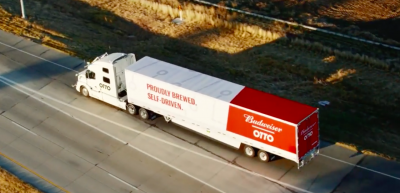
There are approximately 3.5 million professional truck drivers in the United States, according to the American Trucking Association; there are an estimated 250,000 professional truck drivers in Canada (source: Toronto Globe & Mail). This places the position of truck driver among the most common professions, at least for men, in North America. The cost of these drivers represents one of the largest expense items for most trucking firms.
There are a host of initiatives taking place in North America and Europe to partially or fully replace truck drivers with a set of technologies that have come to be known as autonomous vehicles. In addition to cost, this new set of technologies offers a range of benefits.
“Automated vehicles have the potential to save thousands of lives, driving the single biggest leap in road safety that our country has ever taken,” stated former U.S. Transportation Secretary Anthony Foxx. Approximately 35,000 people died in roadway collisions in 2015 and 94 percent of the crashes “can be tied to a human choice or error,” according to the Department of Transportation.
The projected shortage of truck drivers, that is expected to reach hundreds of thousands of positions in 2025, provides further incentives to get robots in the driver’s seat. There’s a huge advantage in getting automated drivers, who can work 24 hours a day, involved in those deliveries, and improving logistics for companies.
The cost of automated vehicle technology, which currently represents between $5,000 and $10,000 per vehicle, would be a sound investment for a new truck, which can cost $125,000-$150,000. Owners can get a quick return on their investment with more efficient cross-country runs; a 2015 Strategy& (formerly Booz) study suggests a savings of 15-20 percent per trip.
Companies are exploring automated vehicles, robotic manufacturing and distribution, so-called chatbot communication, and more as they contend with technological advances and the rise of online shopping, according to a new report from logistics information company Eye For Transport, or EFT.
“The emergence of e-commerce has caused significant shifts within the supply chain as a whole,” researchers wrote in the report. “Organizations — retailers, suppliers and service providers alike — are all aligning their strategies and technology purchases to take advantage of this booming trend.”
Autonomous vehicle technology will penetrate all aspects of the trucking industry, and self-driving trucks will dramatically change its business model, according to a report from the American Transportation Research Institute, or ATRI. The study, “Identifying Autonomous Vehicle Technology Impacts on the Trucking Industry,” published by the trucking industry’s research arm, said self-driving truck technology is advancing rapidly and will start to change the responsibilities of truck drivers. The United States has 10 million trucks on the road, so it won’t happen overnight. But automation will likely happen a lot faster with trucks than it will with cars.
The steps will evolve from semi-autonomous vehicles, where drivers take over for the “tricky” parts, to having a “concierge” just for supervising and monitoring the autonomous trucks. Over time this may beg the question, why are we paying someone to do nothing in these trucks? And then that role will disappear.
“I used to believe we’d see this stuff in 15 to 20 years, that it would get out slowly,” Dan Murray, vice president of the American Transportation Research Institute, said at the Transportation Research Board’s annual conference in Washington, D.C. Then he attended Otto’s test of an autonomous truck last October in Colorado as an independent observer. In what may be the Kitty Hawk moment for autonomous trucks, the Uber subsidiary ran a tractor-trailer equipped with its technology 120 miles on “auto-pilot,” hauling Budweiser beer. “I drank the Kool-Aid,” Murray said. “Is the technology ready? Mostly, yes. It’s mostly financial, institutional challenges we face. But I’m moving my 15 to 20 year forecast up to maybe five.”
While truck manufacturers, motor carriers and the U.S. Department of Transportation are embracing autonomous vehicles and self-driving trucks as providing significant safety benefits, the ATRI study identified the nation’s infrastructure to support autonomous vehicles as a “weak link” and must include “public sector investment.” A significant infrastructure funding increase is needed to make autonomous technology safe and reliable because “deficient infrastructure, such as potholes and poor lane markings can impede” autonomous truck advancement.
Legal and regulatory framework issues are also challenges autonomous vehicles face. While a few states have readily accepted future adoption of autonomous vehicles, “liability across a variety of state laws has not been addressed.” Revised traffic laws in states will be required because following too closely is considered a moving violation. Autonomous vehicle and truck-platooning technology require close vehicle proximity during operation.
The regulations governing how long truckers can drive before taking breaks (HOS) – may have to be modified in future situations where drivers are in the sleeper berth while an autonomous truck is in operation. Cyber Security must be an issue that truck manufacturers must address before autonomous vehicles are a main-stay on U.S. highways because hacked vehicles could lead to crashes, but could also be used to “commit acts of terrorism.”
In other words, Mr. Murray’s 5-year forecast may be a bit ambitious. Nevertheless, autonomous vehicles are coming soon to a highway near you. To learn about the technology and the key players shaping the industry, check in to next week’s blog.
o stay up to date on Best Practices in Freight Management, follow me on Twitter @DanGoodwill, join the Freight Management Best Practices group on LinkedIn and subscribe to Dan’s Transportation Newspaper (http://paper.li/DanGoodwill/1342211466).



















